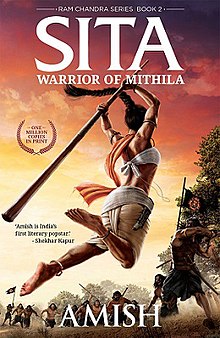 Mahabharata - An epic tale of love and hate, boons and
curses, power and pride, all leading up to the grand Kurukshetra War. We know
the basic storyline; it’s been passed down through generations. The story of
Draupadi and her five husbands – the Pandavas and their fight for power against
their cousins – the hundred sons of Dhritarashtra, i.e. the Kauravas. Cursed at birth, Draupadi is blamed as the cause of
Hastinapur’s devastation, the reason behind this war, yet she was used as a
pawn by the men in her life, such as her father giving her hand in marriage in
return for the Pandavas support against Drona. Or Yudhishtir, virtuous,
philosophical, righteous Yudhishtir who gambled away his wife and lost her to
the Kauravas who humiliated her in open court. Is it not justified then that a
woman subjected to such embarrassment would lash out? Why then should she not
curse the men who caused her such pain?
Mahabharata - An epic tale of love and hate, boons and
curses, power and pride, all leading up to the grand Kurukshetra War. We know
the basic storyline; it’s been passed down through generations. The story of
Draupadi and her five husbands – the Pandavas and their fight for power against
their cousins – the hundred sons of Dhritarashtra, i.e. the Kauravas. Cursed at birth, Draupadi is blamed as the cause of
Hastinapur’s devastation, the reason behind this war, yet she was used as a
pawn by the men in her life, such as her father giving her hand in marriage in
return for the Pandavas support against Drona. Or Yudhishtir, virtuous,
philosophical, righteous Yudhishtir who gambled away his wife and lost her to
the Kauravas who humiliated her in open court. Is it not justified then that a
woman subjected to such embarrassment would lash out? Why then should she not
curse the men who caused her such pain?
Chitra Banerjee Divakaruni tells the entire tale of
Mahabharat through the eyes of Draupadi. We are exposed to the sentiments of a
princess; unexpected and unwanted by her father, a child who grew motherless in
a world where woman had not many rights. We learn of her friendship with
Krishna, her bond with her brother, her relationship with her husbands and her
love for the one man she cannot have.
There are many parellels which can be drawn between society
then and now. The atrocious acts to which women are subjugated (eve-teasing,
disrobing, public humiliation, etc), pride and ego of both genders, the want
for power and money, jealousy and vengeance, gambling and the downfall of the
most righteous of men.
More important however is the way Divakaruni portrays how women established themselves in a strongly patriarchal society. Draupadi is a willful princess who wishes to learn and study alongside her brother. Sharp minded and well aware of her life and prophecies surrounding it, she is a lady with pride and knowledge, one who can speak out when needed and is fearless of the world, ready to take on challenges bravely. She remains loyal to her husbands till the end, putting duty above love each time.
Besides Draupadi, the stories of other females, in the
Mahabharata are also depicted, showing the importance of strong females in the
male dominated society. Kunti - who disciplines and educates her children - the
Pandavas - to ensure that they get their rightful inheritance. Gandhari – wife
of the blind king, who chooses to shut her eyes forever at marriage, thus
choosing equality with her husband, and is grandly rewarded by the gods for her
sacrifice. There’s Subhadra, wife of Arjun, who loses her son and yet risks her
life to save her grandson. Bheem’s wife Hidimba sends her only son to fight in
a war for a husband she hasn’t met in years.
What makes this book standout over other interpretations of
the Mahabharat, is that it illustrates that women made their choices
consciously, and not because of society or as ordained by the men in their
lives. The women chose the lives they led and thus the story enfolds. Such
power in the hands of women in a time of patriarchy is a phenomenal tale.
Of course there is magic and gods and boons and curses,
following with the original tale, but these do not stand out as the highlights
of this telling. Chitra Divakaruni skillfully focuses on “girl power” and its
influence in the Mahabharat, making us wonder at the end, was society better
then or now, or has it not really changed much in terms of its vices.

![Refer to picture for a synopsis. [Screen capture from Dan Brown’s Official Site, so as to not give away any spoilers] boombaba](https://blogger.googleusercontent.com/img/b/R29vZ2xl/AVvXsEjFLygROv-XbbPw38UB78Vt1TS6LKUqT6f5ZRt5K5qyunZz_4oEKwrTSIwRnmh_yIhUC_j19TEHPbZyR6l5kEjwE3TKMxb-Fcld5ePdqVvZgPEIzrG4m_vfPwNZEh2l_aE9v7pmCRPB61U/s640/ooi.png)



